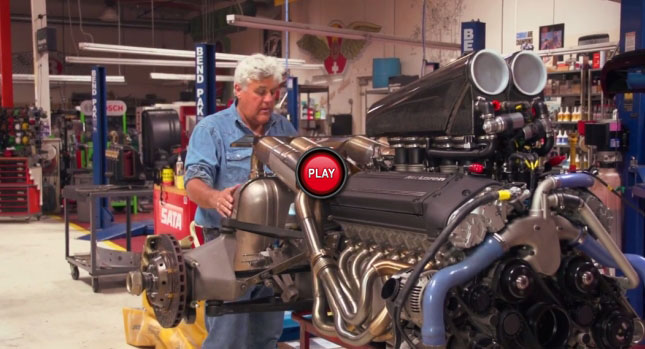The McLaren F1 is a unique kind of special, and still a performance benchmark today, some 15 years since it went out of production. With a curb weight of around 1,100 kg (~2,500 lbs), a V12 engine made by BMW, seating for three plus room for some of their bags and a gold-lined engine compartment, the F1 was really way ahead of its time in so many ways that it would take far more than the space allocated for this piece to talk about each one in detail…
Thanks to a recent video uploaded by Jay Leno, we at least have reason to focus on and talk about the 6,064 cc 60-degree V12 – he recently pulled the heart out of his own F1, for everybody to see.
Not only is it a handsome-looking unit, full of delicious minute mechanical details, most of which are visible and oh-so interesting, but with 618 hp on tap at 7,400 rpm, it’s also very powerful for its size/age, and even by today’s standards – more than 100 hp/liter with no turbos.
In addition, the whole lump, including gearbox and exhaust weighs just 266 kg (586 lbs), adding to the light footprint the F1 is famous for. The oil sump is mounted above the engine (dry sump), so that it can be lowered and improve the center of gravity, just like any self-respecting racing car… We’re pretty sure you know that the engine bay and cover are lined with gold, but once the engine is out, you can see where the declared 16 g (0.8 oz) of the precious metal were used.
Finally, there are very few cars that can touch the F1 in a drag race, even today, with its 0-62 mph (0-100 km/h) time of just over three seconds, but what’s more surprising is that a car with a lot less than 1,000 hp got very close to cracking 400 km/h (250 mph). It achieved 391 km/h (243 mph) in April of 1998, with the rev limit raised to 8,300 rpm. Actually, according to famed racing driver Mario Andretti, the F1 could just have easily dealt with a seventh gear, as the top speed was reached at 7,800 rpm, which was already 400 rpm over the measured point of peak power…
By Andrei Nedelea
VIDEO







